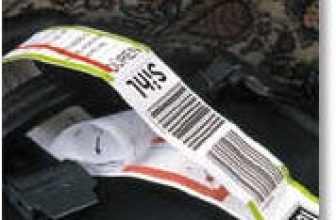
Lisbon Airport uses RFID baggage handling system to completely abandon barcode system
Portugal’s Lisbon Airport claims that the airport’s new RFID baggage handling system (BHS) will reduce the average package handling time by at least 66%. The airport did not use barcodes as a backup to the system, and was the first airport in the world to rely entirely on RFID technology to track baggage delivery, according to Miranda, airport baggage terminal operations manager.
This RFID system is implemented by Denmark’s Lyngsoe Systems, based on the Siemens BHS system, similar to the systems used in Hong Kong and Milan airports, to track all passengers’ checked-in luggage.
Lisbon Airport established a new baggage transfer terminal in 2004, Miranda said, but in 2007 the passenger flow increased dramatically, and some airlines began to complain about delays in baggage handling. Therefore, the airport conducted an extensive process design survey to analyze the needs of the airport’s largest customer-TAP Portugal-.
Airport RFID Baggage Handling System (BHS)
The analysis results prompted Lisbon Airport to decide to use RFID technology to monitor the quality of baggage delivery using Lyngsoe’s automatic baggage quality measurement system. At the end of 2008, the airport installed an RFID BHS system to help the airport respond to the increasing demand for baggage handling and safety requirements, and improve the accuracy of baggage handling.
According to Miranda, many of the luggage handled at Lisbon Airport comes from Africa and South America. The quality of label printing in these countries is poor, and it is difficult for barcode scanners to successfully scan.
The new RFID system includes the labeling of bags sent to the transfer terminal. If a piece of luggage has been tagged, it can be sent directly to the processing system. “This happens very often, and the luggage is already affixed with another airport’s RFID tag,” he said. “If the tag is compliant with IATA regulations, we can use it and write information.”
If a piece of luggage needs to be labeled, it is sent to a manual encoding station (MES). There, the staff read the flight information and the serial number of the baggage barcode tag, and then used a handheld RFID reader to write the tag.
If a worker cannot read the barcode label and write the information into the RFID label, he or she must manually enter the data into the RFID system, and then move the luggage to the taxiway of the correct flight.
As the baggage moves along the conveyor belt, it is read at the 6 baggage transfer points of the conveyor system, according to Miranda.
The airport and its partners made precise adjustments to the RFID system in 2009, and now the average processing time per bag is 10 minutes, a reduction of 52%. The old system requires 30 minutes or more.
The airport uses Bartsch International luggage tags, which use UPM Raflatac ShortDipole EPC Gen 2 inlays with Impinj Monza 3 RFID chips.
Lyngsoe’s airport marketing manager Ida Wetche said that this system hardly requires staff training because it does not involve any new user interface that needs to be learned.





